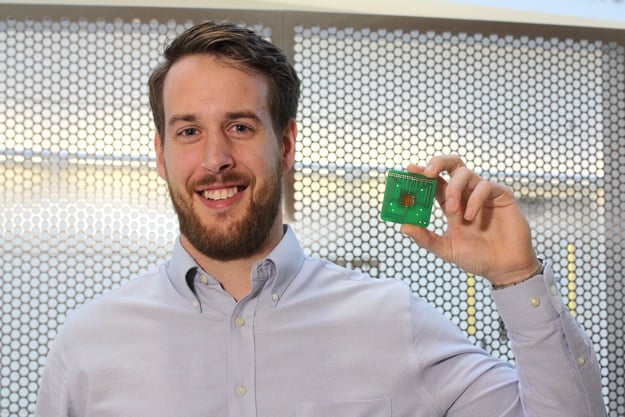Purdue Researchers Develop Exotic Intrachip Microchannel Liquid Cooling For Supercomputers
However, Purdue University researchers have developed a rather novel way to cool high-performance chips more efficiently. The researchers incorporated tiny microchannels directly into the chip to enhance cooling performance. These microchannels are just a few microns wide and help to circulate liquid coolant to more efficiently regulate chip temperatures.
The researchers claim that this microchannel cooling technique is most useful with today's stacked chip designs. Stacked chips allow hardware manufacturers to better scale performance, but the disadvantage comes in the fact that you have multiple layers of chips with only a single attachment point for the heatsink/water block.
"As soon as you have even two chips stacked on top of each other the bottom one has to operate with significantly less power because it can’t be cooled directly," writes Justin A. Weibel, a research associate professor for Purdue’s School of Mechanical Engineering.
“This transformative approach has great promise for use in radar electronics, as well as in high-performance supercomputers. In this paper, we have demonstrated the technology and the unprecedented performance it provides," explained Suresh V. Garimella, a Goodson Distinguished Professor of Mechanical Engineering at Purdue.
The researchers were able to fund the project with the help of a $2 million grant from the U.S. Defense Advanced Research Projects Agency (DARPA). Given that this was partially funded by the government, it should come as no surprise that there are military applications for this cooling technology as well. The defense department thinks that it could be useful for high-performance radar systems used on the ground and in military aircraft.
Commercial HFE-7100 fluid is pumped through the microchannels, and is dielectric so that there won't be any issues with short-circuiting fragile electronic components. The fluid boils when circulated through the chips, which helps to increase the amount of heat that can be removed. According to the team, its microchannels cooling can accommodate chips that generates 1 kilowatt of heat per square centimeter.
“This number of 1,000 watts per square centimeter is sort of a Holy Grail of microcooling, and we’ve demonstrated this capability in a functioning system with an electrically insulated liquid,” Garimella added.
Unfortunately, there are no indications of when such technology could be commercially available.



